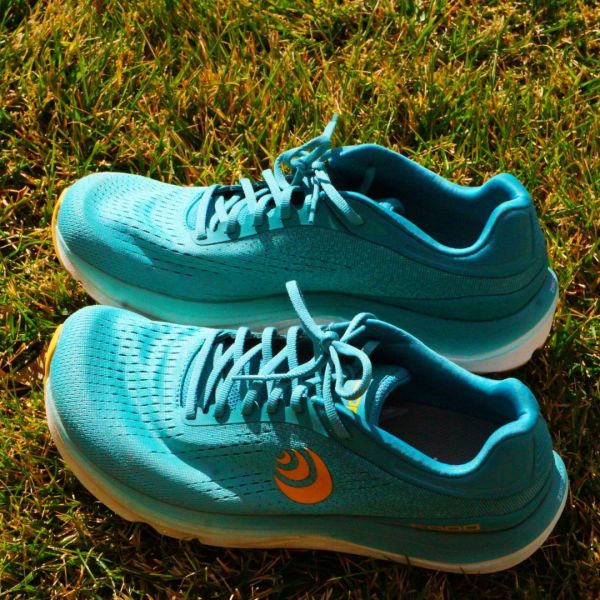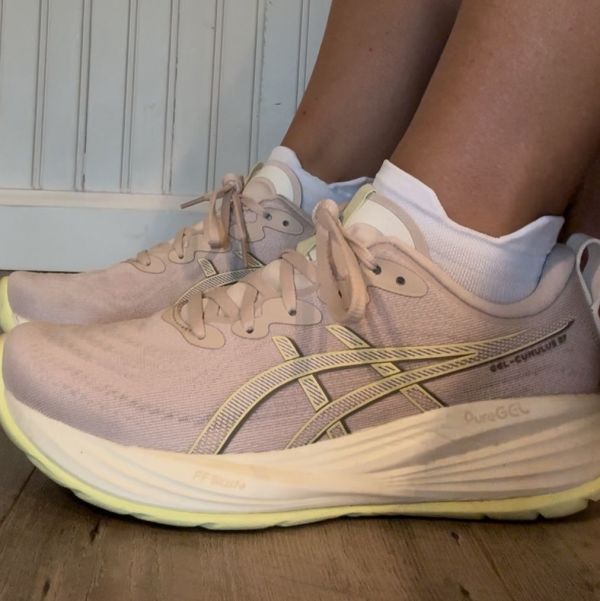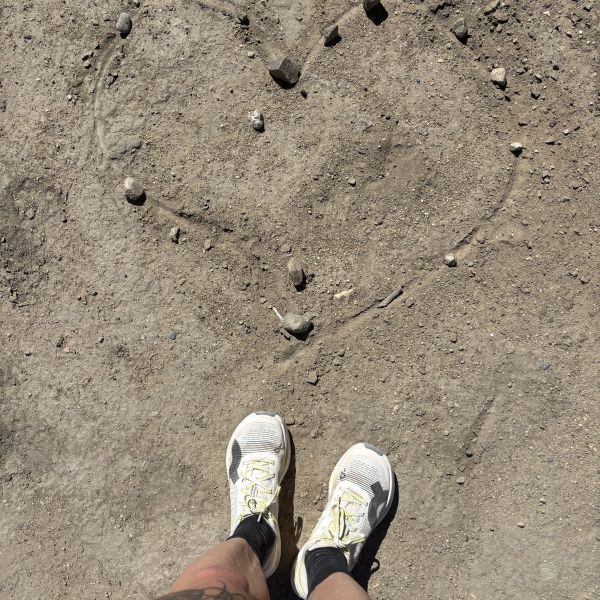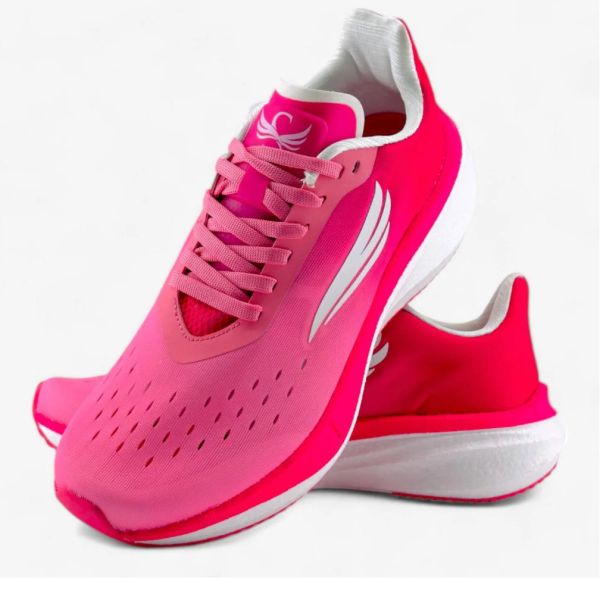
I’ll be honest, the colorway was what drew me to this shoe in the first place. At the time, I didn’t really mess around with speedwork much. I’d throw in some strides or short Fartleks here and there, but never anything structured or at all goal-oriented. I cared more about going farther than faster, so I didn’t see the point when I could just focus exclusively on low-and-slow. Once I started working with a coach and exploring the idea of speedwork, even as a distance runner, I realized that a) it actually makes a difference in endurance efforts and b) … it’s actually pretty fun.
Now that I enjoy speedwork, no matter how difficult and intimidating it can be, I needed a shoe to match. I’ve been using my regular road shoes, the Escalante 2.5, for everything on pavement from easy runs to intervals, and noticed how quickly they were wearing out from the regular grind. I also noticed some fit issues during workouts, like my heels sliding when I powered up hill sprints on my toes and blisters from moisture inside the shoe. I decided to try two different options on my next round of shoes to see if different shoe designs for different purposes would last longer and perform better within their own spheres.
It was the perfect excuse to finally get rainbow shoes.
Design
I have to start here so I can get the shallow part out of the way. They’re beautiful, with a black upper starkly in contrast with a bright rainbow gradient along the sides of the outsole. The white model features a blue gradient here, which is also pretty sleek, but I’m scared of ever wearing anything white from head to foot while training. I’d ruin them instantly. Black is safer, and, of course, comes with rainbow. Easy choice.
Fit and Function
I also like the attention to detail in this category. The mesh upper is constructed more loosely but less flexibly than the regular Escalante to allow for more breathability and to shed a few grams. The upper still seems pretty strong, but I am curious to see how it will hold up long-term compared to its predecessor. I’m not sure if I want to sacrifice too much durability in exchange for lightness or airflow, no matter how nice those qualities are when I’m moving at a fast clip, because I can’t be replacing shoes all that often. I push every pair to the limit (sometimes to a fault) and need a shoe that can handle a pretty long life. We’ll see if the stitching falls through before anything else and how many miles it holds up for before that.
Longevity aside, I immediately noticed the lighter weight resulting from this and other structure choices that trim the fat. I found it easier to shorten my cadence and spring off the balls of my feet. The slim fit helped with this too, keeping it snug so that it moved in equal motion with my foot without slipping and sliding around. I do like the comfort from the tighter fit around the heel and along the sides of the shoe, but it also feels a bit shorter end-to-end than usual so I’d say it runs small across the board. This caused a bit of frustration and pressure on my big toes.
On a final comfort note, the tongue of the Racer lies especially flat against the top of the foot without wrinkling or catching anywhere. It’s short enough to keep from rubbing against my ankle when moving quickly and allows for tight lacing to keep it snug.
Performance
Like I mentioned above, I did easily notice a slight but effective weight difference in the Escalante Racer compared to the OG. The Racer measures only 169 grams per shoe to the classic’s 196. The Racer also features a more firm midsole, while removing much of the cushioning and softer ride of the original in favor of a more minimal structure. The difference here gives the Racer a springier response, brings your foot closer to the ground for added sensitivity, and forces your foot to stay active instead of sinking into cushioning.
The snug fit from the tight mesh knit and narrow heel keep the foot from shifting around inside the Racer, which can be a hindrance when running at a high cadence. The non-stretch nature of the mesh upper did make my forefoot feel more cramped than expected in Altra shoes. That took some getting used to, but did help me make sure I landed light and square on my toes.
Overall I’m very happy with my test run of the Escalante Racer, and not just because of the rainbows (though that’s a big perk). As I learn more about training, I am starting to appreciate the benefits of a speed-specific shoe featuring small but effective changes from a more standard road shoe design. Speedwork takes a unique toll on your body, so it’s important to have a shoe that a) supports and enhances all that effort, and b) keeps your body as safe as possible under the demands of your training. The Racer definitely makes for a good transition into speed shoes, because it modifies key aspects of the Escalante without sacrificing too many of the comforts that make the OG so reliable.
Sponsored by WeeViews.
Login to your account to leave a comment.






We Want to Give it to You!
